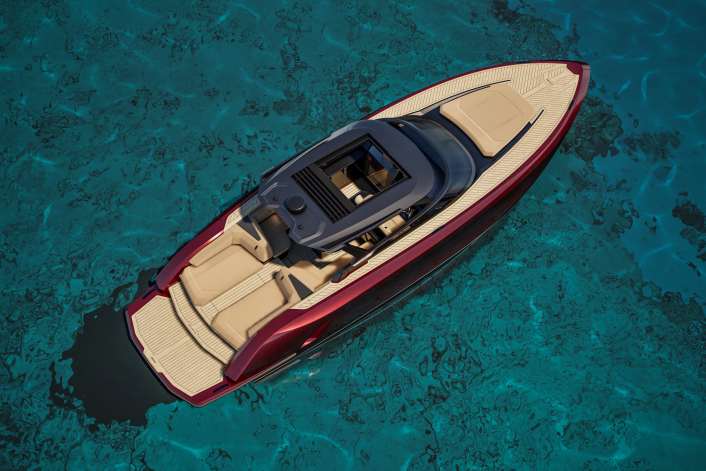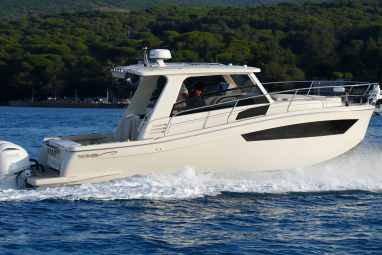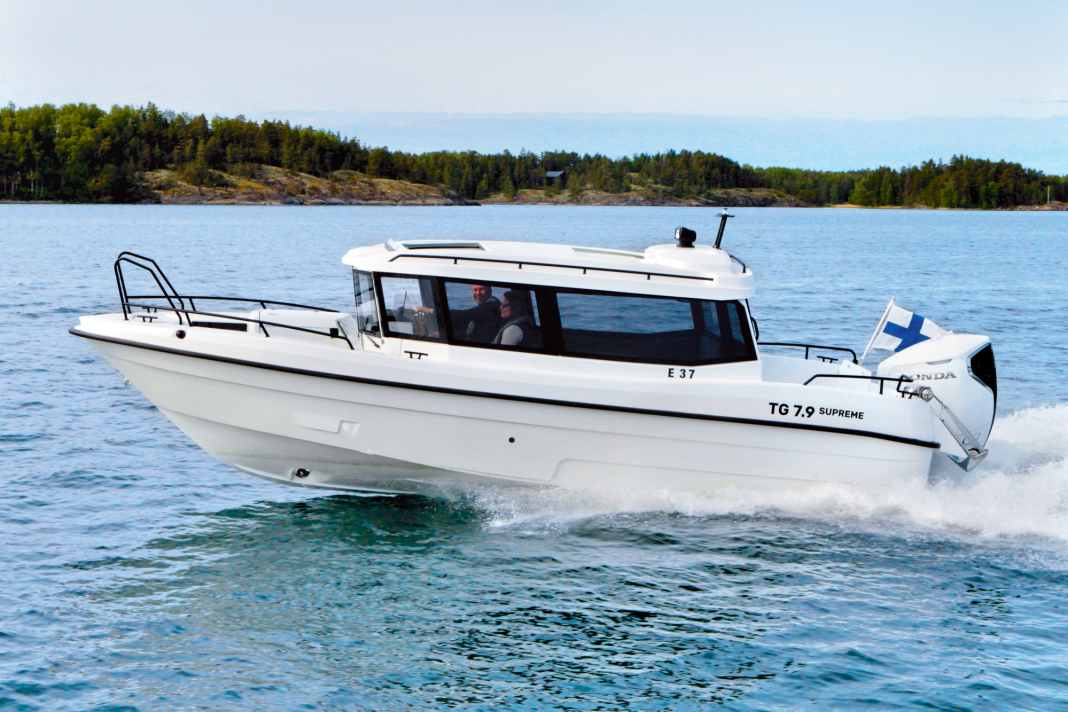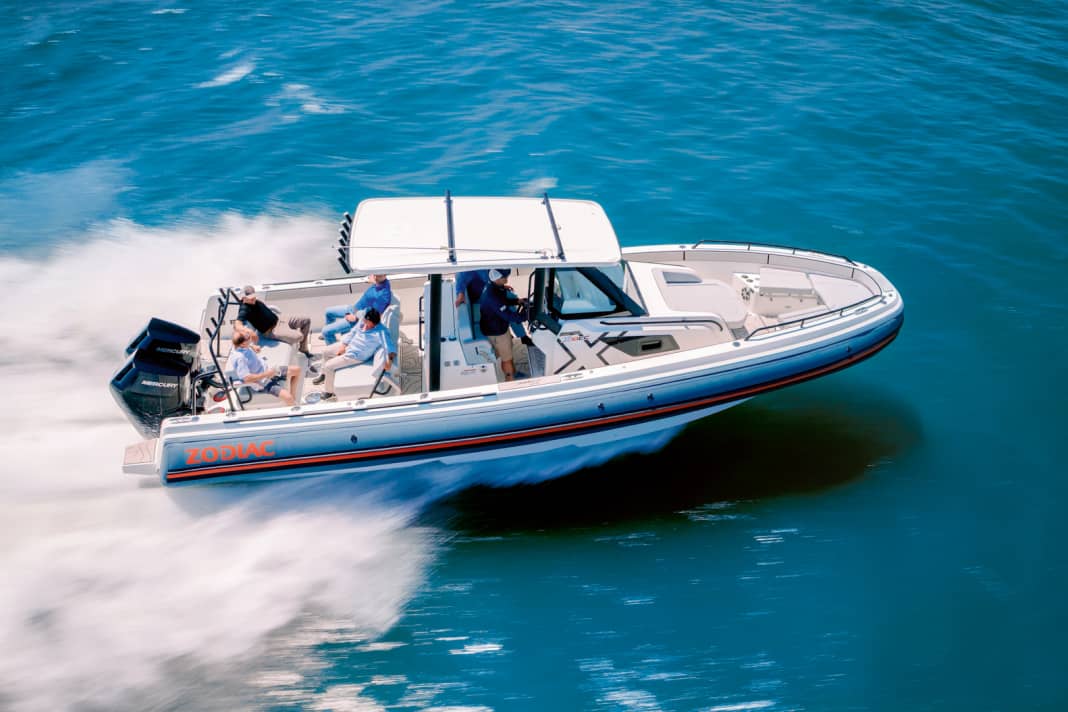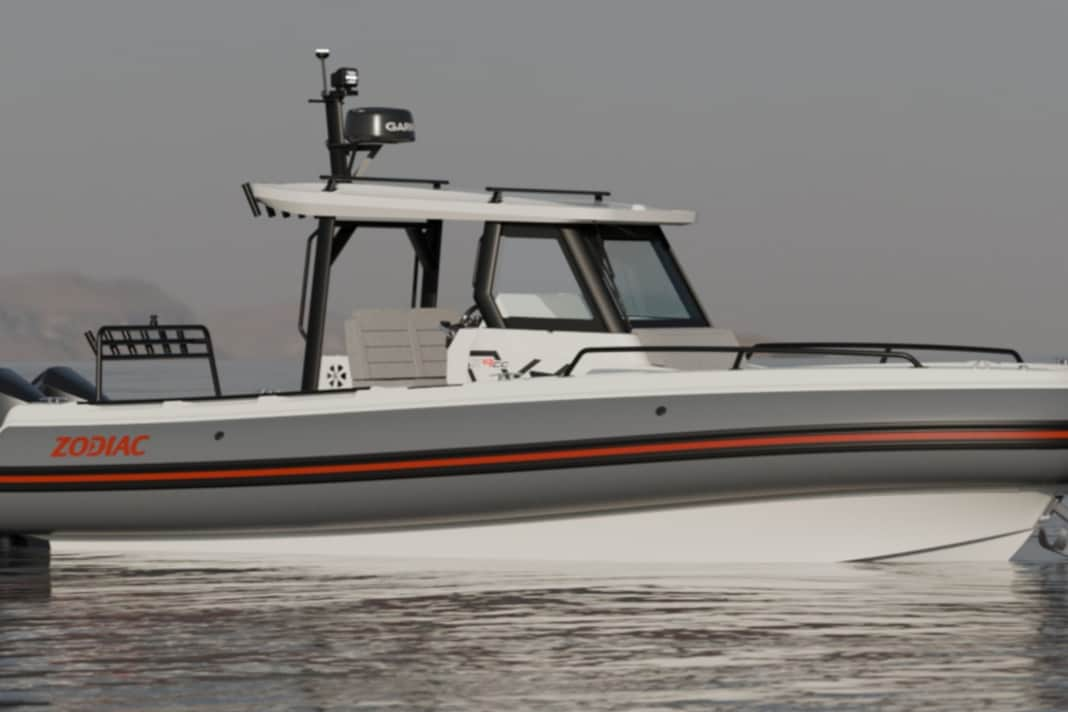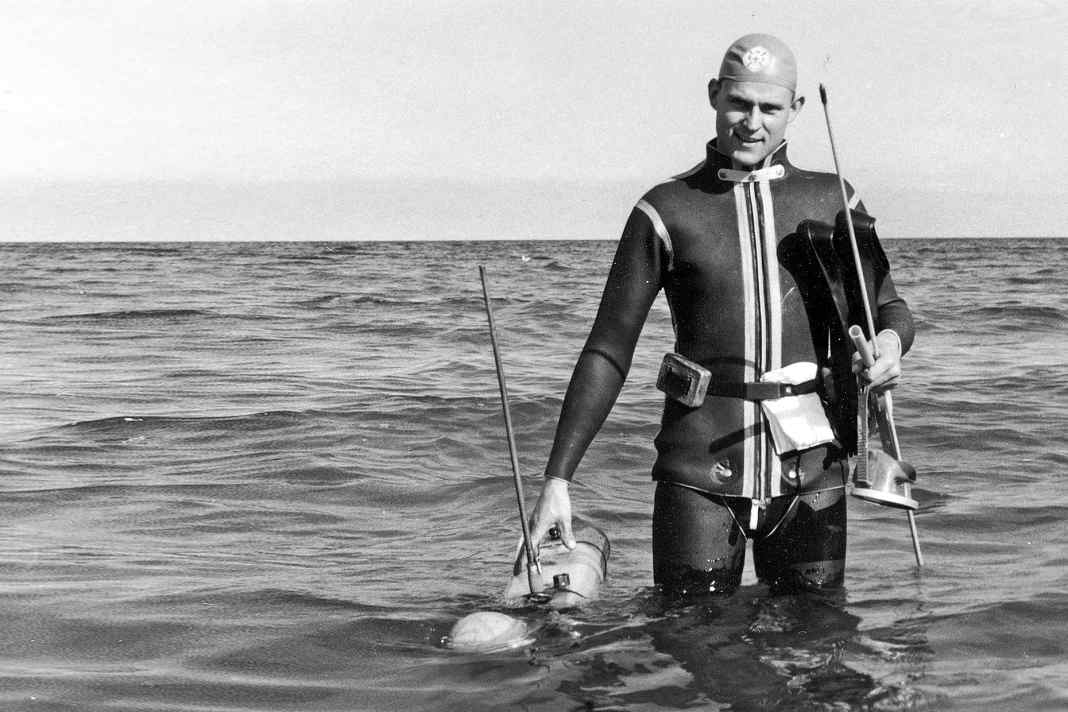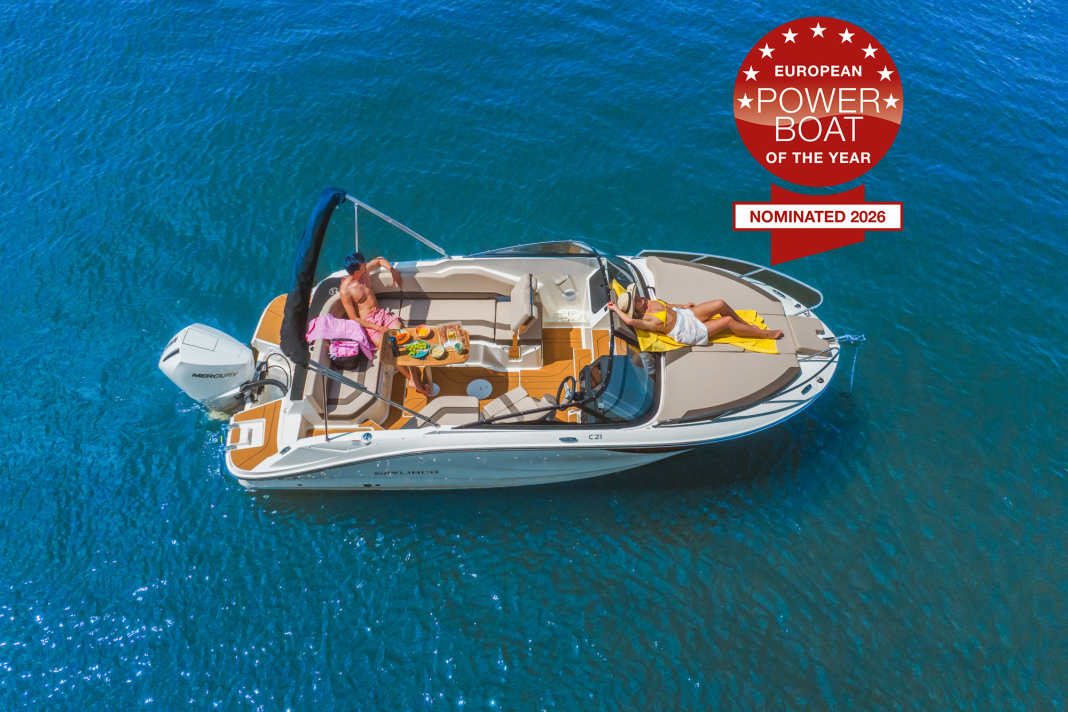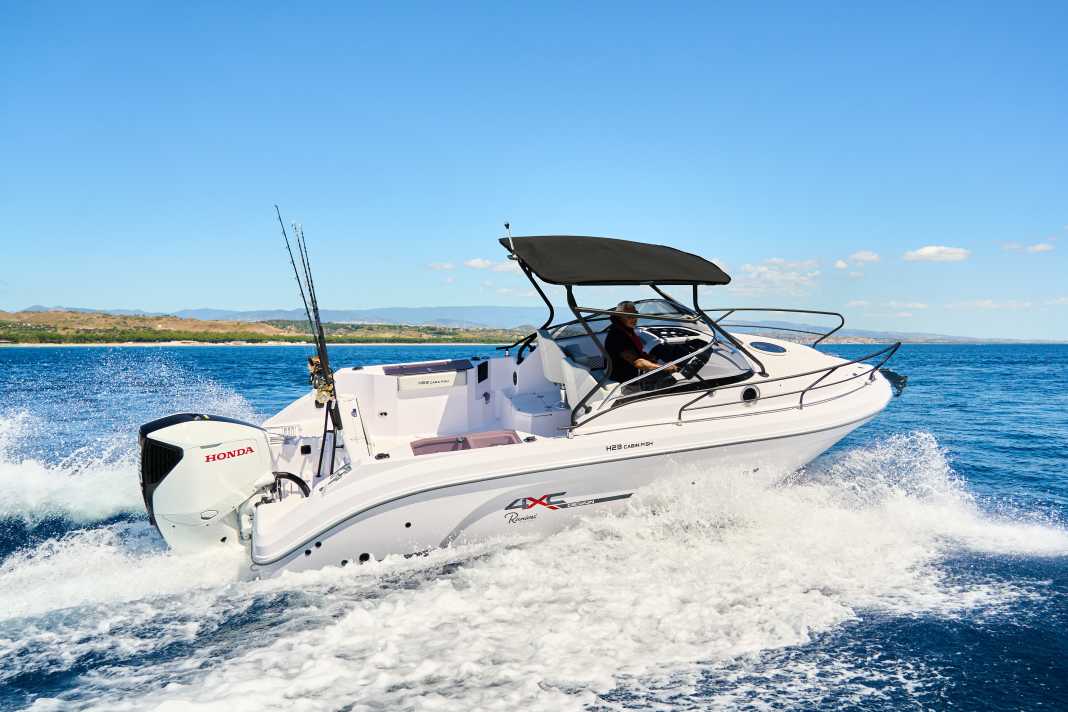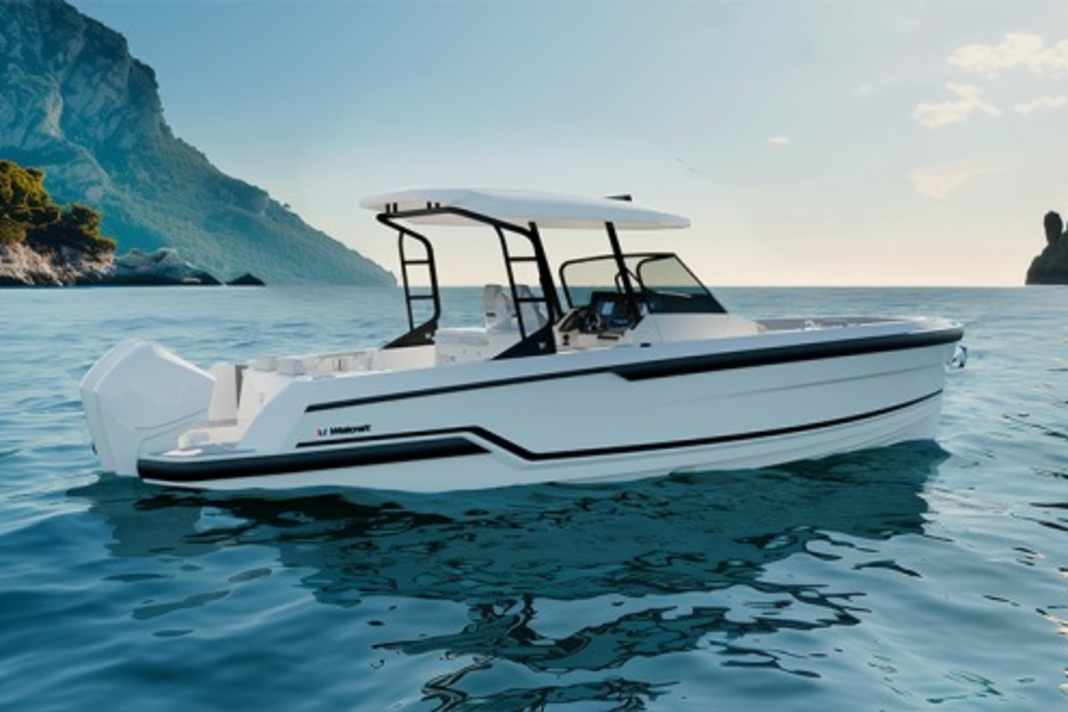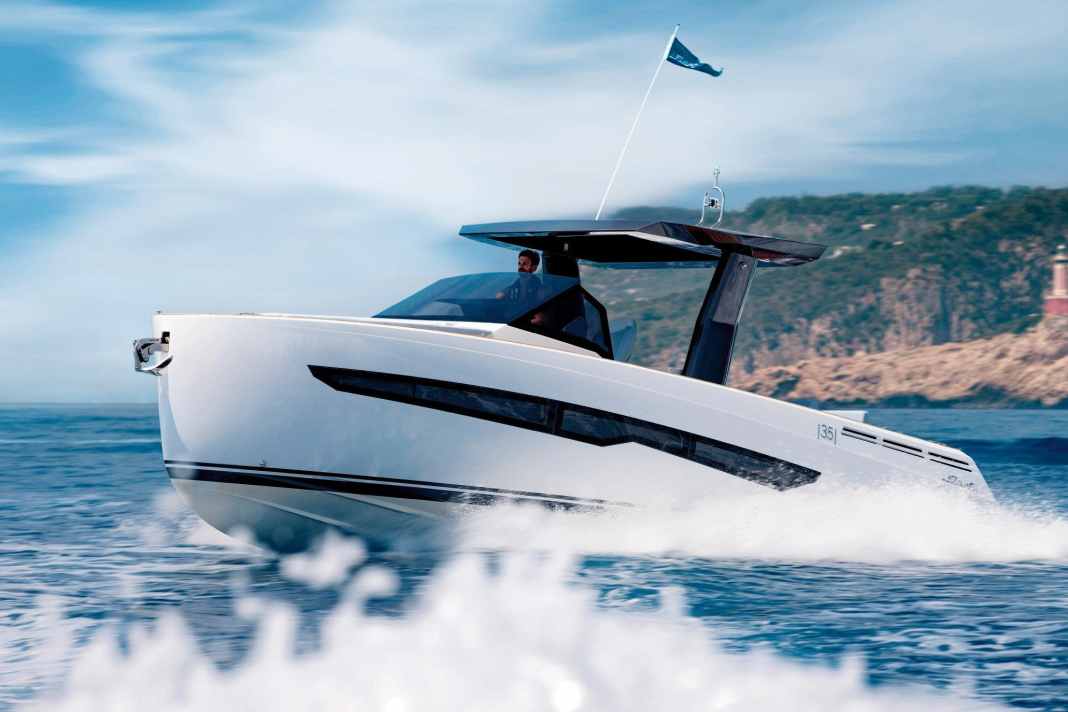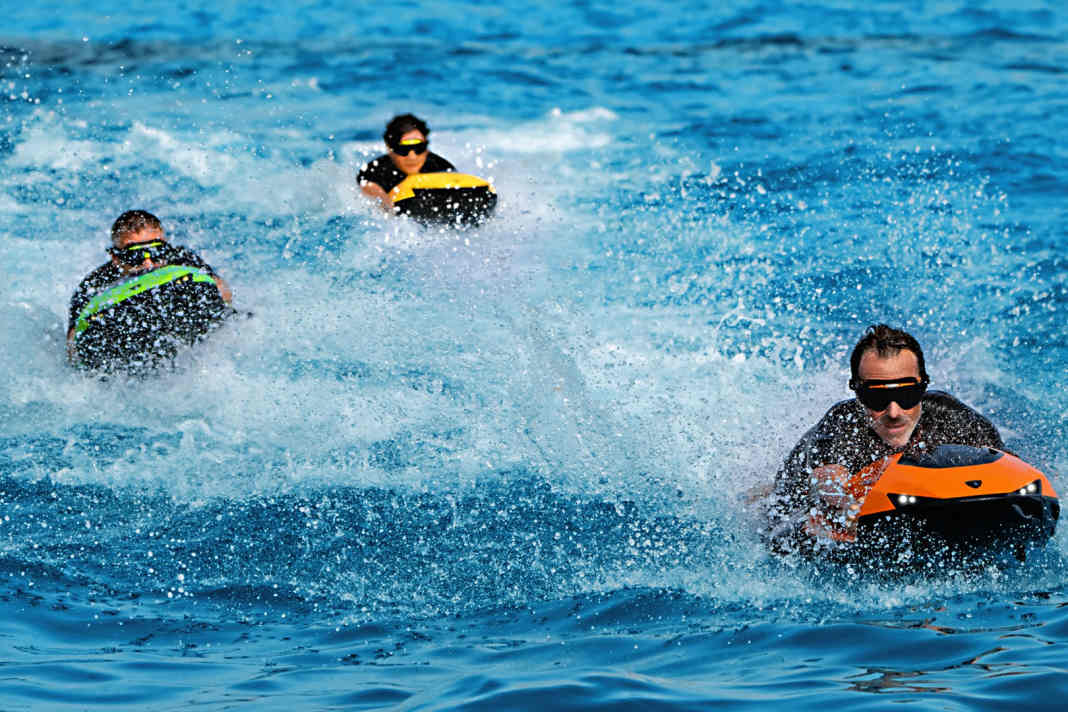Sports boats: For fun and excitement on the water
The dream of owning Boat often revolves around sleek, fast motorboats with a sporty appearance. By definition, not only particularly sporty watercraft, but all boats up to a certain size are sport boats as long as they are used for sport or leisure purposes. On the other hand, those that require real sporting activity, such as small rowing boats or personal watercraft, do not fall into this category.
Ambiguities in the definition do not dampen the great joy that hundreds of thousands of boat owners and boaters experience every year. charterers with your watercraft. Recreational boats are fun - regardless of whether it's just the boat itself that is used for sporting activities or whether you use it for "real" sports such as waterskiing, fishing, diving or swimming. BOOTE not only sheds light on the definition, but also provides valuable expertise on the characteristics and operation of pleasure craft and introduces various manufacturers, brands and models.
Definition: What is a recreational craft?
According to the EU regulation, all boats, regardless of their Drive that are used for sport and leisure purposes and are between 2.5 and 24 metres long are recreational craft. The German Recreational Craft Ordinance also states that recreational craft may not be authorised for more than twelve people plus the skipper. This includes not only motorised boats, but also sailing boats.
Sport boats is a generic term that covers a wide variety of boat types. From day cruisers and weekenders to comfortably equipped Yacht with overnight accommodation, recreational boats offer a wide variety of uses, sizes, equipment features and price ranges. However, they all have one thing in common: they are leisure boats. On deck and in their interiors, they are equipped primarily for recreation and leisure activities. While commercially used boats are usually designed to transport certain goods or carry out other activities, leisure boats are equipped with seating, a bathing platform, living and sleeping areas, sports and recreational facilities, for example.
Sports boat types: From inflatable boats to luxury yachts
Depending on which type of leisure activity is at the centre of attention, the pleasure boats differ and have corresponding designations. The day cruiser, for example, is designed for day trips and offers no overnight accommodation. Cruising boats or cabin cruisers, on the other hand, are designed for longer trips and offer a berth for each crew member. They are often larger yachts. Very fast sports boats are called powerboats or speedboats. Their main purpose is to travel at high speeds and they have to be very light and narrow to do so. There are also differences in the standard of equipment: In luxury yachts, the furnishings go far beyond practicality. Comfort takes centre stage. In other sports boats, on the other hand, practical, seaworthy and economical solutions take centre stage.
Seaworthiness classification: From A to D
Recreational boats also vary greatly in terms of their seaworthiness and there is a classification into different categories that can be used to recognise the extent to which a boat can cope with wind and waves. Boats carry the CE markings A, B, C or D. Boats in category A are seaworthy and can withstand wind forces of over 8 Beaufort and wave heights of over 4 metres. Category D, on the other hand, is only designed for sheltered waters, very low waves and light winds. Sometimes different categorisations apply depending on the number of crew members. For example, if a boat is labelled A, all components on board must be able to withstand the corresponding loads. In addition to a design that prevents the boat from capsizing even in heavy seas, other equipment and construction features must also be present, such as labelled attachment points for fire extinguishers or a storage space for a life raft.
Safety equipment on board recreational craft: Regulations and recommendations
However, a recreational craft is not only seaworthy due to its design, but also due to additional equipment. The laws on this are quite lax. The Federal Maritime and Hydrographic Agency only has regulations for "large pleasure craft" and these only include navigation lights, sound signals and a magnetic compass. Responsible boaters should therefore equip themselves more extensively and follow the recommendations of the Federal Ministry of Transport and Digital Infrastructure, for example. These include, for example
- Tax compass
- Bearing compass or other bearing device
- Echo sounder
- Current paper nautical charts and documents for the sailing area
- Pencil, compasses and course triangles
- Radar reflector
- Marine radio system for participation in the GMDSS
- Traffic regulations for the sailing area
- Faint-proof lifejackets with signal whistle
- Safety belts with snap hooks for picking,
- Lifebuoy with floating throwing line and light
- Distress signalling equipment
In addition, the following safety equipment may be useful depending on the sailing area:
- Two portable fire extinguishers of fire class ABC
- Scoop or pump for scooping water
- Anchor with sufficiently long line or chain
- Hand lamps, splash-proof, with spare batteries and bulbs
- First aid equipment
- Important flags and signalling bodies
- Shut-off valves on fuel tanks
- Radio receiver for weather reports
- Sufficiently long, buoyant lifeline
- Life raft
- Boat hooks and fenders
- Binoculars, barometer, foghorn
- List of beacons, tide table and manuals for the radio service
- Two paddles or straps
- Repair instructions, tools, spare parts
- Reserve fuel/lubricant
Commercial use and chartering of pleasure craft: What needs to be considered?
Privately used pleasure craft are rarely inspected with regard to their safety equipment. In contrast, there are more checks and more extensive equipment regulations for boats that are hired out or used commercially. Charterers need a so-called boat certificate for their watercraft. Boat owners who use their boat for other commercial purposes or who also provide a skipper for hire must have a safety certificate. The owner can apply for this if their boat fulfils certain safety regulations and they have a recreational coastal navigation licence or inland navigation licence.
Safely underway on pleasure craft - with the pleasure craft licence
Safety on boats is not just a matter of the boat's design and equipment, but above all the crew. The necessary skills in handling safety equipment, navigational aids and the technology on board are indispensable and can make the difference between life and death in an emergency. Knowledge of the area is just as important as knowledge of lights and sound signals.
For which boats and waters is the recreational boating licence valid?
It is true that pleasure craft up to 15 hp may be sailed without a pleasure craft licence (SBF). However, this does not mean that no knowledge is required to steer such boats. Anyone who has not acquired the necessary knowledge in the theory courses as part of the SBF should do this on their own before setting out on the water. There are inland and sea versions of the recreational boating licence. Both licences are internationally recognised and allow you to operate boats with an engine power of over 15 hp and up to 20 metres in length. Additional licences and certificates are required for larger vessels or for sailing in less coastal areas. Exceptions: On the Rhine, the SBF Binnen is only valid up to 5 hp and 15 metres in length and for sailing on Lake Constance, the so-called Bodenseeschifferpatent is required from 6 hp.
Who can obtain a recreational boating licence?
The inland and sea recreational boating licences can be obtained from the age of 16. In addition to the theoretical courses, which can be taken in person or online, there is also a practical part. In addition to passing the theory and practical examinations, physical fitness is also required to obtain a recreational boating licence. The examination for this includes hearing and sight tests, for example. You can save time and money by combining the inland and sea licences.
What do you learn as part of the recreational boating licence?
The courses cover basic nautical knowledge about navigation, weather, traffic rules, handling safety equipment, light guidance, use of sound and flag signals, etc. Flags can be used, for example, to indicate that you are unable to manoeuvre (red flag). You should also know a lot about light guidance before you go out on the water, especially at night or in poor visibility. For example, that the colour green stands for starboard and red for port. This applies not only to the marking of your own boat, but also to waterways equipped with buoys and beacons. Stern or top lights on the boat and the centre fairway buoys, on the other hand, are white. To avoid accidents, knowledge of the traffic rules on the water is also essential. Depending on the sailing area, the international Collision Prevention Regulations (KVR), the German Maritime Traffic Regulations (SeeSchStrO), the German Inland Waterways Regulations (BiSchStrO) and other regional regulations apply. They regulate how watercraft should behave when they meet - who should give way, who should keep their course, etc. As regional particularities also apply depending on the waterway, it is important to find out about the respective navigation area in advance. You should also be familiar with the use of sound signalling systems and the meaning of the respective sound signals. In reduced visibility, they are an important means of warning or informing other ships. The various sound signals are made up of long and short tones, which are usually emitted from a foghorn.
Why obtain a recreational boating licence - and where?
In order to be able to travel safely and relaxed on the waterways, it makes perfect sense to obtain a recreational boating licence - regardless of engine power. After all, collisions, emergencies at sea and bad weather can affect more than just motorboats with over 15 hp!
There are many schools and providers for obtaining inland and sea boating licences throughout Germany. You don't necessarily have to go to the sea to complete the practical part of the SBF See licence. Courses can also be taken online. The prices vary depending on the provider and are made up of the costs for the course, practice material, practical part, examinations and medical examination.
Radiotelephony certificates: Who needs them?
In addition to the various driving licences, there are also various radiotelephone certificates. Anyone travelling with a boat that requires equipment and has a radiotelephone system must have a corresponding certificate. Here too, there are two different radio licences for inland and sea.
Authorisation: Which registrations and documents are required?
Depending on the sailing area and hull length of the boat, it must be registered in the shipping register or with the responsible water and shipping authority. In coastal waters, this is only required from a length of 15 metres. By then at the latest, it is also mandatory to display the name and home port of the boat clearly on the hull, which is also recommended. One exception is the personal watercraft: Registration is always required for this recreational craft. On inland waterways, registration is mandatory from an engine power of 3 hp and a length of 5.5 metres.
You should always have the purchase contract and confirmation of payment for the boat with you. If you want to use your boat abroad, you may need an international boat licence. Prior registration of the boat is a prerequisite for obtaining this licence. It can then be issued by the ADAC, the German Motor Yacht Association or the German Sailing Association.
Powerful motors
An important feature of sports boats is, of course, their propulsion - after all, this is the main reason why they can be so sporty when travelling. Sports boats are therefore often motorised beyond the required minimum. This is particularly necessary for planing, which is so popular with many motorboat enthusiasts. Because only a high speed can make boats glide. But other speedboats also need plenty of power to deliver the desired performance. The amount of power an engine ultimately needs to move the boat and make it manoeuvrable can be calculated from the length of the hull and the weight. However, the water in which a boat is to travel also plays a role in the choice of engine power. Seas and currents create additional resistance and require more horsepower than still water.
In addition to the rated power, there are other distinguishing features of the motor types. There are outboards, inboards and hybrids of these two drive types. Boat engines also differ in terms of their energy source: Internal combustion engines are still in the majority, but electric motors are also on the rise.
Outboards: Uncomplicated power bulwarks at the stern
Outboard motors are very often used to power pleasure craft. While they used to be found on smaller to medium-sized boats, nowadays they also power larger yachts. A great deal of high-tech has made it possible to produce high outputs in the confined space under the housing cover. Often, several of the engines hang side by side at the stern and deliver plenty of "power to go". The fact that manufacturers are increasingly focussing on outboards and not preferring to hide such powerful drive units below deck is due to the numerous advantages that outboards offer:
- They are unbeatably easy to maintain - all engine parts are freely accessible under the cover of the housing. The other drive components such as the gearbox and propeller are also accessible without having to take the boat out of the water or use a diver.
- Extensive winter preservation is also not necessary.
- The boat is steered by swivelling the outboard motor - a separate steering system is therefore not necessary, but it is still very manoeuvrable
- As the outboard motor is completely outside the boat, there is more storage space on board for other things.
- Outboards are cheaper and lighter than inboards.
Despite all the progress made in the field of outboards, there are limits to their use. Above a certain boat size, only inboard engines are an option.
Inboard: Unbeatably efficient
But there are also reasons, apart from the size of the boat, that speak in favour of inboards. Even though outboards are becoming more and more powerful, there are still advantages that only inboards can offer, such as the following:
- Inboards are often diesel engines and therefore more economical than outboards, which almost always run on petrol.
- Inboards are hardly exposed to the risk of theft.
- Noise pollution from engines located in a dampened interior is significantly lower.
- Aesthetic or practical reasons can also speak in favour of inboards: they are hidden below deck and do not protrude into the bathing platform.
Mixed forms and other drive types
If you want the advantages of both an outboard and an inboard, you can opt for hybrid forms, such as the Z-drive. With this type of drive, only the motor itself is on the inside, with the gearbox, rudder and propeller on the outside.
However, the rarer water jet drive (also known as jet propulsion) is also used from time to time in sports boats, but above all in personal watercraft (which are therefore also known colloquially as jet skis).
Boat engine market: Manufacturers and their offerings
Behind the powerful and increasingly efficient engines are innovative companies. Some of them specialise in water sports, others in electric drives and still others are renowned car manufacturers with a division for boat engines. The global market leader is the American company Mercury. Other important suppliers include Yamaha, Honda, Volvo Penta, Suzuki and Tohatsu. The best-selling electric boat engines come from the German company Torqueedo. In the lower power range, the American manufacturer Minn Kota supplies electric motors with an excellent price-performance ratio. Other well-known suppliers of electric motors include ePropulsion, Aquamot, E-Tech and RiPower.
Leisure and fun on pleasure craft
How can leisure time be organised on pleasure craft? What sports and hobbies can they be used for? The aforementioned personal watercraft can be used as sports equipment. However, anyone who buys or hires one should be aware of a few things:
- A recreational boating licence is required to operate a personal watercraft. Hardly any jet ski has less than 15 hp - therefore, as with other motorboats, a driving licence is required.
- Within the fairway, personal watercraft may only be used on specially marked sections (blue sign with white personal watercraft).
- Jet skiers must always give way to other vehicles.
The same rules also apply to towing vehicles of water skiers.
Driving extremely fast powerboats can also be described as a sport. After all, anyone travelling on the water with several thousand horsepower at the stern and over 100 knots should be physically fit and equipped with protective clothing such as a racing suit and a helmet.
But sports boats can also be a little less sporty. With the right equipment, they are also perfect for fishing or camping trips. Vertical fishing requires a great deal of skill and precision, as well as the right boat with a suitable motor and remote control. Electric and/or bow motors are often used.
If you don't have a motorboat with berths, you still don't have to miss out on a boat trip. After all, there are plenty of campsites along the rivers, coasts and lakeshores.
Of course, sports boats can also be used perfectly as a base for snorkelling or diving trips. As a boat owner, you are independent and can explore the underwater world at your own pace and away from the tourist hotspots. However, not every sports boat is equally suitable as a base for diving. Either solid inflatable boats and RIBs or boats with a diving platform are suitable. Alternatively, you can book diving trips where the responsibility for the boat lies with the organisers. Snorkelling, on the other hand, is less complicated.
Sport boats in the test
Whether you are a newcomer to the boating world or an old hand, you are unlikely to have a complete overview of all the sports boat models from the various manufacturers. Which models are new on the market and how do they rate? Which manufacturer stands for which features and qualities? What differences are there in terms of performance, handling, comfort and equipment? Which sports boats are suitable for experienced skippers and which are more suitable for beginners?
BOOTE compares and tests brands, models and manufacturers so that you can find the boat of your dreams with as little research as possible. Or simply stay up to date. Because: It remains exciting in the world of sports boats!
Reports from the perspective of water
As a pleasure boat enthusiast, you have probably already realised that you have chosen an exciting hobby. Whether it's a dreamy trip along the Croatian coast, an engine failure in the middle of the fairway, your first gliding trip or manoeuvring with a boat trailer - with your pleasure boat you will discover a whole new world.
Because many boat owners can't get enough of it, BOOTE provides informative and entertaining articles about the world's most beautiful pastime all year round. So that you are also well supplied with sports boat input in winter.
